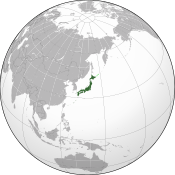Japan nuclear disaster: areas to remain off-limits for decades
Thursday, August 25, 2011

Image: KEI.

Image: Saneef.
Japanese officials have admitted for the first time that certain radiation-stricken areas around the crippled Fukushima Daiichi nuclear power plant may remain uninhabitable for decades. Japanese media this week reported that embattled Prime Minister Naoto Kan is to visit affected areas within days to tell residents and local officials that it will remain too dangerous to return to parts of Fukushima Prefecture in the foreseeable future.
| We cannot deny the possibility that there will be some areas where it will be hard for residents to return to their homes over a long period of time. | ||
—Yukio Edano, Chief Cabinet Secretary | ||
Chief Cabinet Secretary Yukio Edano said, "We cannot deny the possibility that there will be some areas where it will be hard for residents to return to their homes over a long period of time."
The dangers of radiation exposure in certain areas are expected to remain unacceptably high well after the plant finally undergoes a cold shutdown in the coming months. A final decision on which areas are to be declared off-limits will be made following detailed radiation monitoring and the creation of a comprehensive decontamination plan. Japanese officials have so far declined to specifically name any areas likely to be affected.
Scientists have for months warned of such an eventuality following the meltdown of three reactors at the Fukushima site in March. The government, criticised for its management of evacuations in the wake of the disaster, had hoped to lift current evacuation orders for most areas around the plant. However, it cannot do so amidst dangerously elevated radiation readings, including in the town of Okuma, situated about three kilometres from the Fukushima site, where cumulative radiation levels are over 25 times higher than government-mandated limits.
Media reports have also focused on uncertainty surrounding compensation for the many thousands of residents affected by the ongoing evacuations. The government may possibly purchase or rent the properties of those who cannot return to their homes and businesses.
Although the plant operator, the Tokyo Electric Power Company, has recently claimed radiation leaks from all three reactors have declined, concern continues to mount over the true scale of contamination. Scientists have detected widespread contamination of topsoil on agricultural land, further jeopardising the future habitability of significant areas, and uncertainty remains as to the true extent of radioactivity in numerous areas.
“Caesium-137, the main radioactive element thrown out during the various explosions, has a half-life of 30 years, and it is not going to disappear overnight,” said Didier Champion, a French nuclear safety expert.
Sources
- "Kan to spell out no-go zone reality" — The Japan Times, August 23, 2011
- Yves Miserey. "Fukushima : certaines zones durablement évacuées" — Le Figaro, August 22, 2011 (French)
- Justin McCurry. "Fukushima disaster: residents may never return to radiation-hit homes" — The Guardian, August 22 2011
- Martin Fackler. "Large Zone Near Japanese Reactors to Be Off Limits" — The New York Times, August 21, 2011



